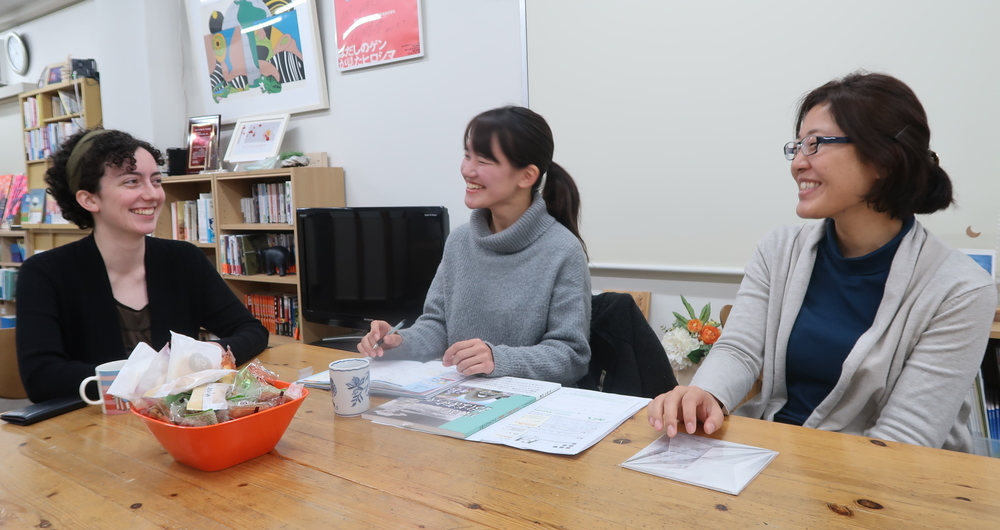Lingua franca is a group of 10 to 15 university students who work to expand young people’s consciousness of Hiroshima, the atomic bombing, and war. While its subject matter may be serious, Linga franca’s methods are informal and warm.

Today I was lucky enough to talk with one of Lingua franca’s members and current manager, Mizuho Motoune, who was born and raised in Hiroshima and is a second-year university student. The group’s name, which means “common language” in Italian, expresses the members’ aim of using conversation as a bridge to connect young people with Hiroshima’s history. The members of Lingua franca hail from Hiroshima University, Hiroshima City University, Hiroshima Bunkyo University, and Hijiyama University.
Lingua franca’s events, usually targeted at university students, have included screening the movie Yunagi no Machi, Sakura no Kuni, as well as a discussion session between Japanese students from Tokyo and Hiroshima and international students from Rwanda, where both parties learned about each other’s country and culture.

Since the group’s inception, Lingua franca hosts Hachi Roku Talk (8.6 Talk) every year on August 6. Hachi Roku Talk is an event that gives youth an opportunity to speak with hibakusha in an informal setting. According to Mizuho, unlike a formal lecture, Hachi Roku Talk creates an atmosphere similar to hanging out at a cafe or on a porch, an atmosphere where youth can view the hibakusha as neighborhood elders. The event emphasizes the personal stories of hibakusha over impersonal facts about the bombing.
Around 100 people participate in Hachi Roku Talk, which saw its third iteration in 2016. Participants come from all over Japan and share how war affected their own communities, such as Okinawa or Tokyo. Mizuho said that growing up in Hiroshima, she mostly equated war with the atomic bombing, but through hearing others speak at Hachi Roku Talk about what war means to them, Mizuho’s own image of war became more nuanced.

In April of this year, Mizuho plans to team up with ANT-Hiroshima’s Kuniko to talk with university students about Keiji Nakazawa’s Barefoot Gen. The event will especially be directed at students who came to Hiroshima’s universities from other parts of Japan; the organizers’ thinking is to help out-of-town students make the best use of their time in Hiroshima and learn about the city’s history. The students can also share their own thoughts with Lingua franca and each other.
I was very glad for the chance to talk with Mizuho. Since arriving in Hiroshima six months ago, I’ve met a number of inspiring young people working to spread the messages of Hiroshima, peace, and international understanding. English doesn’t quite do the trick, so (sorry, English readers) I’m going to resort to ありがとう、私も頑張ります!
Click here for Lingua franca’s Twitter, and here for the group’s Facebook page.

